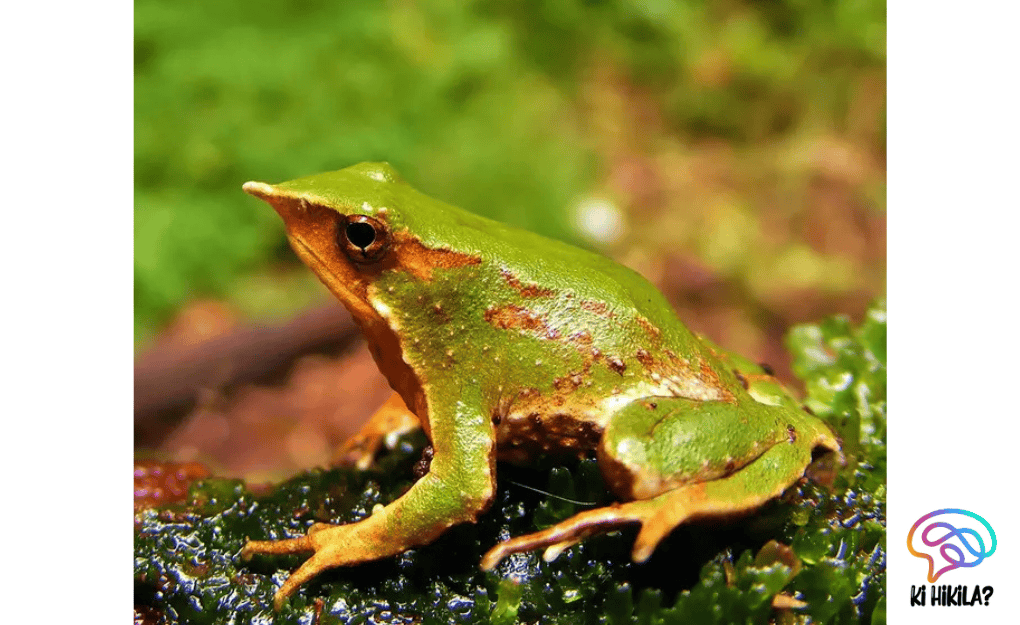Darwin’s Frog is capturing global attention as Chile intensifies its conservation efforts to protect this endangered amphibian. Famous for its leaf-like appearance and rare reproductive behavior, the frog is now at the center of a national campaign to prevent its extinction. The Chilean government, in partnership with private landowners and conservation organizations, is taking significant steps to safeguard its habitat and stabilize the population.
Species Overview
Darwin’s Frog, scientifically known as Rhinoderma darwinii, belongs to the family Rhinodermatidae. It is one of two species in its genus—the other being Rhinoderma rufum, or the Northern Darwin’s frog. While the southern species is listed as endangered, the northern one is critically endangered and possibly extinct, with no confirmed sightings since the 1980s.
Measuring just around 3 cm in length, Darwin’s Frog was first discovered by Charles Darwin during his voyage on the HMS Beagle in 1834 on Chile’s Chiloé Island. Its most distinguishing features include a pointed snout, cryptic coloring resembling dead leaves, and an astonishing mode of reproduction.
Unique Reproductive Behaviour
What sets Darwin’s Frog apart from other amphibians is its highly unusual parenting method. After the female lays eggs, the male guards them until they begin to move. At that point, he swallows the developing embryos into his vocal sac, where they continue to grow. Eventually, fully developed froglets emerge from his mouth—an extraordinary adaptation known as “mouth brooding.”
This upside-down brooding behavior is rare in the animal kingdom and highlights the evolutionary uniqueness of the species. The frog is also known for its diurnal activity patterns and a peculiar defense mechanism: it plays dead to avoid predators.
Habitat and Distribution
Darwin’s Frog primarily inhabits the temperate forests and forest streams of southern Chile and parts of Argentina. These ecosystems include a mix of mossy forest floors, shrubs, woody debris, and freshwater sources within native forest cover. The frogs rely heavily on undisturbed forest ecosystems to breed, hunt, and survive.
Unfortunately, habitat fragmentation has severely impacted the species. Urban expansion, agricultural development, and logging have led to a dramatic reduction in suitable living areas.
Threats to Survival
The decline of Darwin’s Frog is driven by a combination of human-induced and natural threats. One of the most pressing issues is climate change, which has altered rainfall and temperature patterns in southern Chile. This disrupts the frog’s breeding cycles and the availability of moisture-rich habitats.
Additionally, forest fires, intensified by both climate change and human activity, have devastated large tracts of native forest. Urbanization and road construction have further fragmented habitats, while invasive species such as trout and other introduced predators disrupt local ecological balances.
The frog’s sensitivity to environmental change makes it an indicator species; its decline warns of deeper problems in the region’s biodiversity.
Conservation Initiatives
In response to these alarming threats, the Chilean Climate Change and Sustainability Committee has launched a comprehensive conservation initiative focused on Darwin’s Frog. The multi-pronged effort includes:
- Habitat preservation through legal protections and land-use regulations.
- Population monitoring to track the remaining frog populations and identify breeding grounds.
- Public awareness campaigns to educate citizens about the frog’s significance and the need for urgent conservation.
- Partnerships with private landowners to secure forested areas where the frog can breed and thrive.
By discovering potential new populations and expanding known habitats, conservationists hope to stabilize the species and prevent extinction.
Importance of Conservation
Darwin’s Frog is more than just an endangered species—it’s a living fossil, offering insights into amphibian evolution and adaptation. Its survival reflects the broader health of Chile’s native forest ecosystems.
Protecting this tiny amphibian has cascading benefits. It helps maintain the region’s biodiversity, ensures the stability of forest ecosystems, and strengthens local ecological resilience against climate change. Moreover, the species has become a symbol of national environmental pride in Chile, prompting greater engagement from schools, communities, and policymakers.
Conclusion
Darwin’s Frog may be small, but its ecological and scientific significance is immense. As Chile ramps up its conservation efforts, the rest of the world watches with hope that this rare amphibian—first chronicled by Charles Darwin nearly two centuries ago—will continue to leap across forest floors for generations to come. The fight to save Darwin’s Frog is a race against time, but with collaborative action and sustained public support, extinction is not inevitable.



